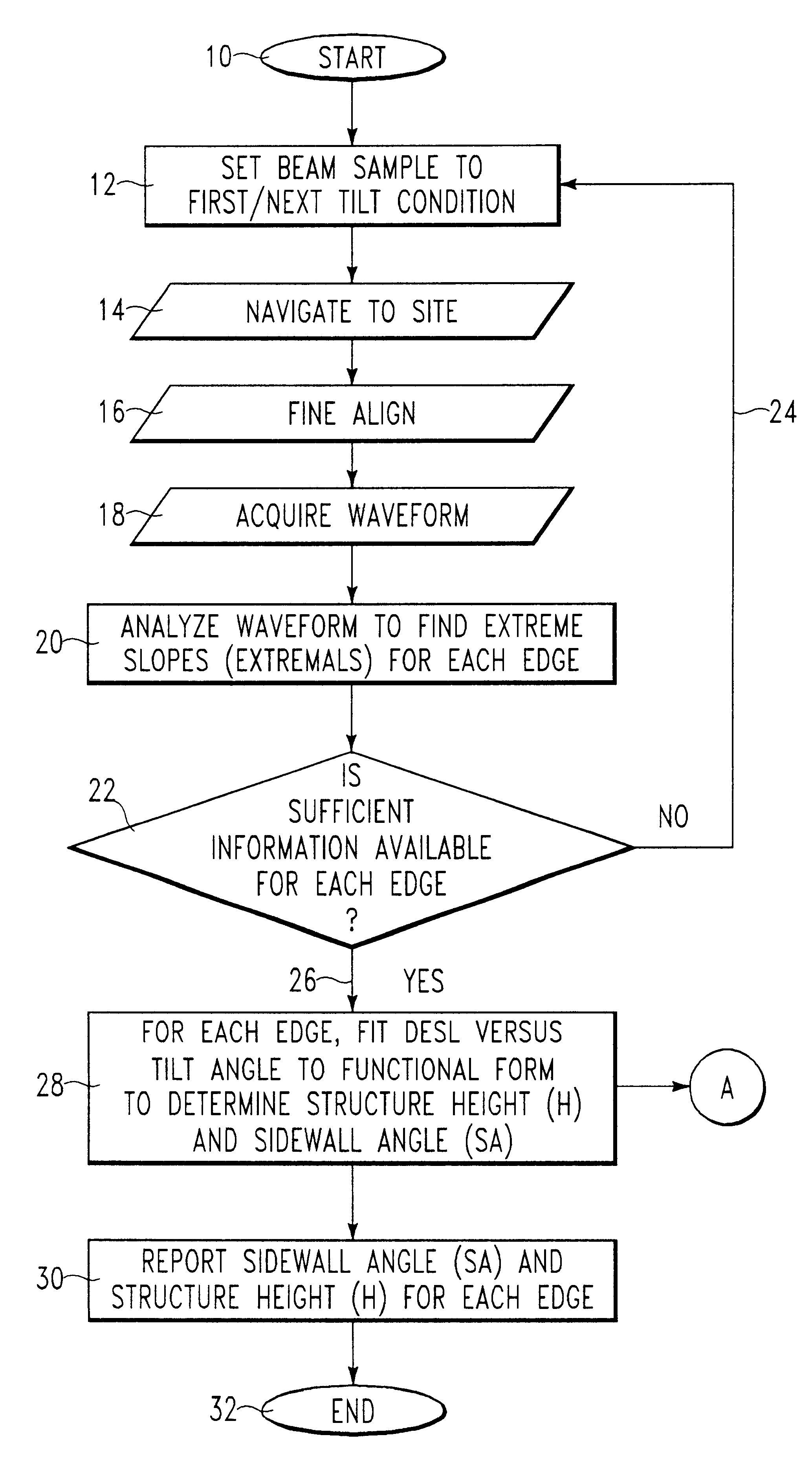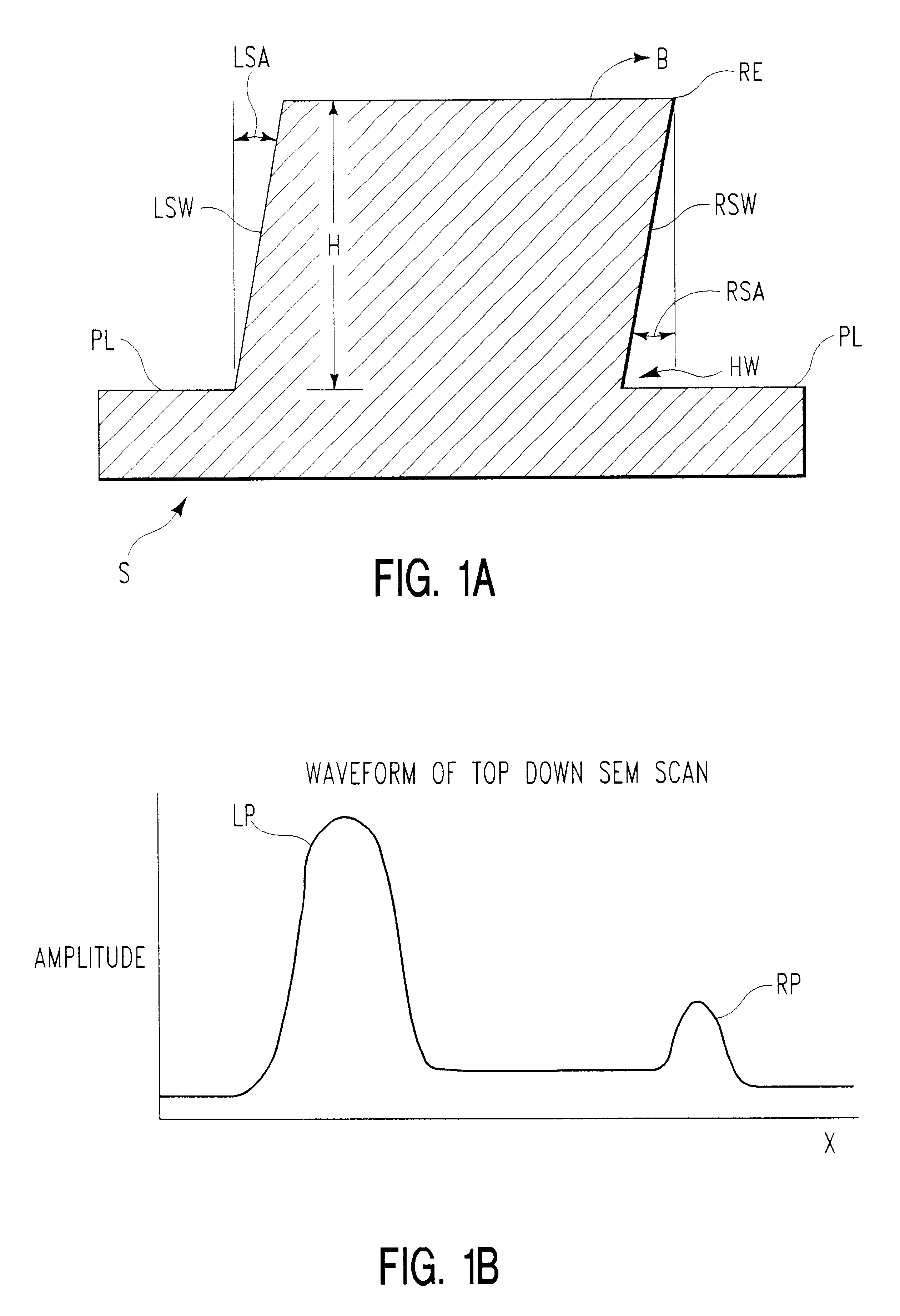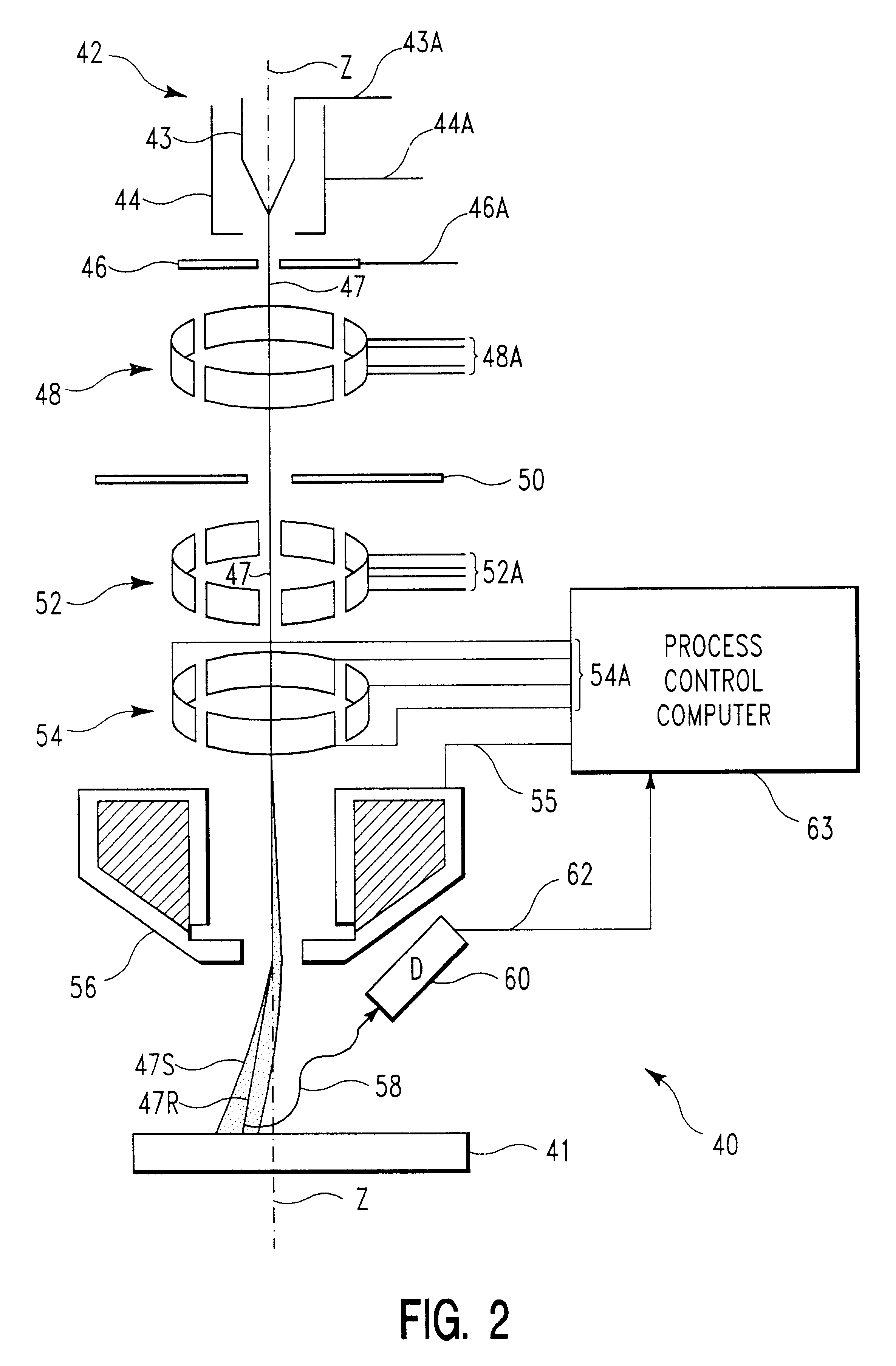Automated method for determining several critical dimension properties from scanning electron microscope by using several tilted beam or sample scans
a scanning electron microscope and critical dimension technology, applied in the direction of material analysis by measuring secondary emission, material analysis using wave/particle radiation, instruments, etc., can solve the problems of poor correlation between the electron microscope (cd sem), the image or waveform acquired by scanning focused sem beams, and the inability to accurately determine the critical dimension of the workpi
- Summary
- Abstract
- Description
- Claims
- Application Information
AI Technical Summary
Problems solved by technology
Method used
Image
Examples
Embodiment Construction
Consider a system where during calibration it was determined that K.sub.0 =6 nm, K=2 nm and the threshold was chosen to be 16 nm. The system first acquires a waveform with a vertical electron beam (0 degrees of tilt) and the DESL determined for an edge of interest is 8 nm. Next the system sets up a tilted beam of 2 degrees and determines for that condition the DESL is 8 nm. Neither DESL value determined so far is above the threshold, so the system sets up a new tilt of 4 degrees; the resulting DESL is determined to be 20 nm. There is now one DESL value above the threshold but the system needs at least two values above the threshold, so a new tilt angle is set: 6 degrees. The resulting DESL is 35 nm. There are now two DESL values above threshold and the system can now proceed to determine the structure height and sidewall angle. The data collected are listed in the following table:
These data are plotted in the graph shown in FIG. 12.
The two DESL values above threshold determine a str...
PUM
| Property | Measurement | Unit |
|---|---|---|
| tan θ | aaaaa | aaaaa |
| angle RSA | aaaaa | aaaaa |
| spot size | aaaaa | aaaaa |
Abstract
Description
Claims
Application Information
 Login to View More
Login to View More - R&D
- Intellectual Property
- Life Sciences
- Materials
- Tech Scout
- Unparalleled Data Quality
- Higher Quality Content
- 60% Fewer Hallucinations
Browse by: Latest US Patents, China's latest patents, Technical Efficacy Thesaurus, Application Domain, Technology Topic, Popular Technical Reports.
© 2025 PatSnap. All rights reserved.Legal|Privacy policy|Modern Slavery Act Transparency Statement|Sitemap|About US| Contact US: help@patsnap.com



